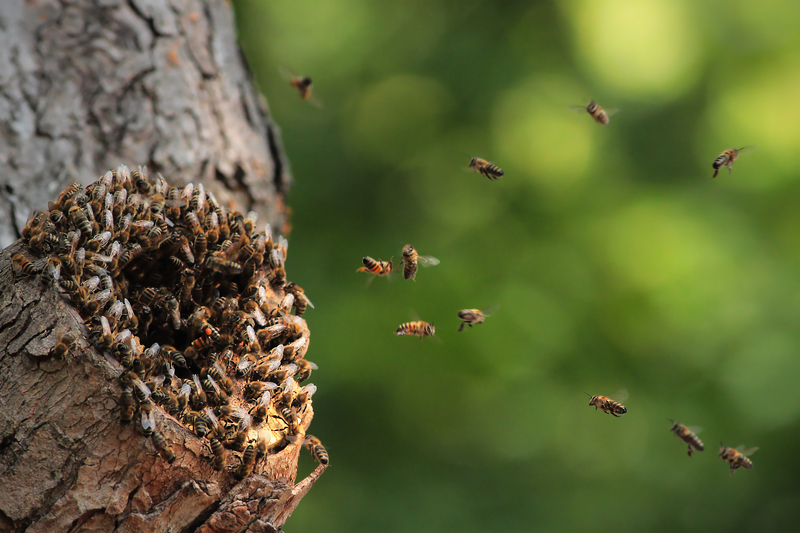Achieving a Flourishing Garden from Neglect's Grip
Posted on 17/06/2025
Achieving a Flourishing Garden from Neglect's Grip
Turning a neglected garden into a thriving paradise is not only possible--it's a deeply rewarding process that rekindles a love of nature while dramatically improving the value and aesthetics of your property. In this comprehensive guide, you'll learn practical, actionable steps for transforming a garden that's fallen into ruin into a lush and flourishing outdoor sanctuary. Whether you inherited an overgrown yard or simply let your busy lifestyle take priority, achieving a flourishing garden from neglect's grip is within your reach.
Understanding the Roots of Neglect
Before diving into soil, tools, and plant selection, it's essential to address why gardens fall into neglect. Common causes include:
- Lack of time due to busy schedules
- Inadequate gardening knowledge or experience
- Physical limitations or health issues
- Unfavorable weather conditions
- Life changes like moving, illness, or family commitments
Recognizing the cause can help you prevent future stages of neglect and maintain motivation throughout your garden's transformation.

Step 1: Assess the State of Your Neglected Garden
Every successful garden revival begins with a thorough assessment. Walk through your garden, taking notes and photos. Key elements to assess include:
- Weed and Invasive Plant Infestations: Identify harmful weeds overtaking your space.
- Soil Health: Inspect for signs of compaction, erosion, or dryness.'
- Existing Plants: Note which ones have survived and may still be salvageable.
- Hardscapes and Garden Structures: Check for damage or decay in paths, fences, and beds.
- Lawn Condition: Look for bare spots, overgrowth, and moss accumulation.
This garden evaluation provides the baseline from which you can measure progress as you reclaim your garden from neglect.
Step 2: Clearing and Cleaning Your Garden
One of the biggest tasks of restoring a neglected garden is the initial clean-up. Roll up your sleeves and prepare for some hard work!
Essential Clean-Up Steps
- Remove Large Debris: Collect fallen branches, trash, and any broken objects.
- Clear Dead Plants and Weeds: Uproot dead annuals, trim damaged perennials, and dispose of persistent weeds.
- Prune Overgrown Shrubs and Trees: Remove diseased or dead wood; prune to encourage healthy new growth.
- Refresh Edges and Pathways: Re-define bed edges, weed paths, and repair hardscapes for structure.
During this stage, be careful to avoid damaging healthy root systems or beneficial organisms in the soil. Compost organic waste to recycle nutrients back into your garden.
Step 3: Soil Revival - The Foundation of a Flourishing Garden
After years of neglect, soil often loses its vitality. Healthy soil is the cornerstone of every flourishing garden.
Testing and Amending Your Soil
- Test Your Soil: Use a simple pH and nutrient test kit, available at most garden centers.
- Amend According to Needs: Add organic matter like compost or well-rotted manure to improve texture, fertility, and microbial life.
- Add Mulch: Applying 2-3 inches of mulch helps regulate temperature, retain moisture, and reduce weed growth.
- Till Sparingly: Excessive tilling can damage soil structure. A gentle hand is best for revitalizing compacted earth.
A thriving, nutrient-rich soil is the backbone of achieving a flourishing garden from neglect's grip.
Step 4: Rescue and Rejuvenate Surviving Plants
Not all is lost! Many long-neglected gardens surprise their caretakers with resilient survivors.
How to Save Existing Plants
- Trim Back and Prune: Cut away dead, diseased, or overcrowded branches.
- Fertilize Sparingly: A little slow-release fertilizer can boost struggling plants.
- Water Deeply: Drought may have stressed your plants--give them a thorough hydrating soak.
- Relocate if Necessary: Move overcrowded or poorly placed specimens for better light or airflow.
Give surviving flora a chance to thrive before replacing or removing them--mature plants often bounce back quickly with the right attention.
Step 5: Weed Eradication and Ongoing Management
Weeds are the bane of neglected gardens, often taking advantage of any lapse in maintenance.
Effective Weed Control Techniques
- Manual Removal: Pull weeds by hand, getting as much root as possible to prevent regrowth.
- Mulching: Suppresses light and reduces weed seed germination.
- Use Landscape Fabric: Under new beds or paths, install fabric to block persistent weeds.
- Herbicides (as a last resort): Opt for targeted, eco-friendly herbicides only when absolutely necessary.
By establishing a regular weeding schedule, you outcompete unwelcome invaders and maintain your garden's beauty.
Step 6: Reimagining and Planting Anew
With cleared beds and revived soil, the fun part begins: selecting and planting new flora to enhance your canvas.
Key Considerations When Replanting
- Site Conditions: Choose plants suited to your garden's sunlight, soil, and moisture levels.
- Native and Resilient Plants: These generally require less water and maintenance.
- Layered Planting: Incorporate trees, shrubs, perennials, and ground covers for year-round interest.
- Pollinator Support: Select nectar-rich flowers to attract bees, butterflies, and birds.
- Plan for Succession: Arrange plants for continuous blooming and visual appeal throughout the seasons.
As you plant, use proper spacing and watering techniques to help new additions establish strong root systems.
Step 7: Restoring Your Lawn
An overgrown or patchy lawn is often the most visible sign of neglect. Transforming it will dramatically improve your garden's appearance.
Lawn Recovery Best Practices
- Clear Debris and Thatch: Rake out built-up thatch and organic matter.
- Mow Gradually: Never remove more than one-third of grass height at once.
- Feed and Aerate: Fertilize and aerate compacted soil to encourage deep root growth.
- Overseed Bare Spots: Apply grass seed and keep watered until established.
A thick, healthy lawn crowds out weeds and sets a lush foundation for your revived outdoor space.
Step 8: Sustainable Watering and Mulching
After restoring your plants and beds, sustainable irrigation ensures long-term success and environmental stewardship.
- Install Drip Irrigation: Target water to roots, minimizing waste.
- Use Rain Barrels: Harvest and use rainwater to ease pressure on municipal supplies.
- Mulch Consistently: Replenish mulch to insulate roots and preserve soil moisture.
Consistent watering and mulching routines are crucial for achieving a flourishing garden from neglect's grip.
Step 9: Long-Term Garden Maintenance Tips
Even the most beautiful gardens can revert to neglect without a sustainable maintenance routine. Here are key strategies to keep your restored garden thriving:
- Set Weekly and Monthly Tasks: Assign dates for weeding, pruning, and lawn care on your calendar.
- Seasonal Adjustments: Mulch, fertilize, and plant at optimal times throughout the year.
- Monitor for Pests and Diseases: Inspect regularly and act quickly to address any problems.
- Encourage Wildlife: Install bird feeders, insect hotels, and small water sources to foster biodiversity.
- Journal Your Progress: Keep a gardening journal with photos to track improvements and inspire continued care.
Step 10: The Emotional Rewards of Garden Restoration
Caring for a garden delivers far more than just beautiful scenery:
- Physical Benefits: Gardening is great moderate exercise and gets you outdoors.
- Mental Health: Green spaces reduce stress, promote mindfulness, and boost happiness.
- Sense of Accomplishment: Watching your hard work flourish is deeply satisfying.
- Community Connection: Share your story, exchange seeds, or join local gardening clubs.
Common Problems in Reclaiming Neglected Gardens
No revival is without its challenges. Watch for:
- Persistent Weeds: Some, like bindweed or horsetail, may require repeated treatments.
- Poor-Quality Soil: Build organic matter year by year for lasting improvement.
- Pest Infestations: Seek natural or integrated pest management strategies for control.
- Drainage Issues: Amend beds and redirect runoff as needed to avoid waterlogging.
Stay patient--nature always rewards persistence and care.

Expert Tips for Achieving a Flourishing Garden from Neglect's Grip
- Start Small: Tackle one area at a time rather than trying to restore everything at once.
- Invest in Quality Tools: Good pruners, gloves, and wheelbarrows make a big difference.
- Seek Local Advice: Join community forums or consult with botanical gardens for plant recommendations.
- Practice Patience: Gardens take time to heal--give yours a full growing season before making major changes.
Conclusion: Cultivating Hope and Beauty from Neglect
Achieving a flourishing garden from neglect's grip is a testament to nature's resilience and your own dedication. By methodically assessing, cleaning, reviving, and replanting, you will cultivate a haven bursting with color, fragrance, and life. Every weed removed and seed sown is a step toward beauty and renewal. Your garden's transformation will not only restore its natural vitality but also enrich your well-being and inspire those around you.
Begin your journey today--the path from neglect to abundance starts with a single, hopeful step.
Frequently Asked Questions: Restoring a Neglected Garden
-
How long does it take to revive a neglected garden?
Depending on the garden's size and level of neglect, significant improvements are possible within one season, with ongoing development over the years. -
Should I remove all existing plants?
Not always! Many established plants recover with care; assess each one before deciding to remove or rejuvenate. -
What are the best plants for low-maintenance restored gardens?
Native species, hardy perennials, and drought-resistant varieties like lavender, sedum, ornamental grasses, and echinacea thrive with minimal intervention.
Let this comprehensive guide be your ally in achieving a flourishing garden after years of neglect. With knowledge, passion, and steady effort, a vibrant landscape awaits!

